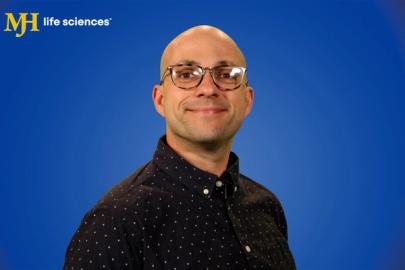- About Us
- Advertise / Support
- Editorial Board
- Contact Us
- CancerNetwork.com
- TargetedOnc.com
- OncLive.com
- OncNursingNews.com
- Terms & Conditions
- Privacy
- Do Not Sell My Information
- Washington My Health My Data
© 2025 MJH Life Sciences™ and CURE - Oncology & Cancer News for Patients & Caregivers. All rights reserved.
Emergency Department Use Common Among AYA Cancer Survivors

A nationally-published, award-winning journalist, Alex Biese joined the CURE team as an assistant managing editor in April 2023. Prior to that, Alex's work was published in outlets including the Chicago Sun-Times, MTV.com, USA TODAY and the Press of Atlantic City. Alex is a member of NLGJA: The Association of LGBTQ+ Journalists, and also performs at the Jersey Shore with the acoustic jam band Somewhat Relative.
Nearly 40% of AYA cancer survivors visit an emergency department within five years after diagnosis for reasons including headache and chest pressure.
More than a third of adolescent and young adult cancer survivors used a hospital emergency department (ED) at least once between two to five years after receiving their cancer diagnosis, researchers have found.
Researchers stated that headache, acute urinary tract infection, chest pressure and sepsis were consistently among the most common reasons for ED use.
Researchers analyzed data of 7,925 AYA survivors, aged 15 to 39 at the time of diagnosis from Kaiser Permanente Southern California. The survivors were two to five years from diagnosis between 2006 to 2020. Results showed that 38% of AYA survivors had at least one ED visit in that time, researchers reported in the Journal of Adolescent and Young Adult Oncology.
“The big takeaway is that it's actually pretty common that an AYA survivor might experience at least one emergency department visit over the course of that two-to-five-year period after a cancer diagnosis. Almost 40% had at least one,” study lead author Karen Wernli, a Senior Scientific Investigator at Kaiser Permanente Washington Health Research Institute, said in an interview with CURE®. “I think it's also important to look at the flip side, which is that over 60% didn't have any emergency department visits. While [ED use] is pretty common, it's also common that you wouldn't experience any ED use at all.”
Among the survivor cohort, which was 65.4% women and 45.8% Hispanic with a mean age at diagnosis of 31.3 years old, factors associated with increased ED use included:
- being age 20 to 24 at the time of diagnosis
- being female
- being non-Hispanic Black
- having a comorbidity
- being covered by public insurance
While the 7,925-survivor cohort experienced 8,477 ED visits during the study period, the yearly rates of ED use declined by 24% from year 2 to year 5, according to the study.
“Some people may still be in active treatment, and so there might be reasons related to active treatment that they're using the ED [more] in year two to three,” Wernli said.
Wernli noted that the study did not address what patients can do to reduce their likelihood of visits to the ED during survivorship.
LEARN MORE: Mindfulness, Caregivers and Research Support AYA Patients with Cancer
“Prior studies have shown that maintaining a close connection either with your oncology provider or specialty provider, whoever treated the patient… might be important in reducing ED use,” she said, noting that for some acute conditions that arise patients’ “best choice might be reaching out to their primary care provider first, rather than going straight to the ED.”
Wernli and her colleagues, citing previous studies, noted that less than half of AYA cancer survivors have a documented primary care provider [PCP], and that “AYA cancer survivors report infrequent if any visits with their PCPs within the last year.”
Continuity of care between providers, and clear patient-provider relationships, are important, as Wernli explained.
“I think that specialists being able to work with primary care doctors in terms of how to facilitate that survivorship care into the early part after a diagnosis is just a really critical point in making sure people understand who might be available to help them for both acute but maybe not so urgent things, and also to diagnose what could be side effects from cancer treatment, cardiotoxicities, all the other important things that could that really do need urgent medical attention,” she said.
For more news on cancer updates, research and education, don’t forget to subscribe to CURE®’s newsletters here.
Related Content:



